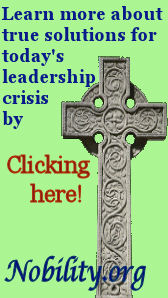The Buckingham Palace announced on Friday that the Duke of Cambridge has been appointed a Knight of the Most Ancient and Most Noble Order of the Thistle.
Her Majesty’s decision to appoint her grandson to the Order is somewhat unexpected because only three other members of the Royal Family – excluding the Sovereign – are members: Prince Philip, Prince Charles and Princess Anne. It was usually assumed the Queen would appoint her other sons as Knights, The Duke of York and The Earl of Wessex, before bestowing the honor upon any of her grandsons.
The Most Ancient and Most Noble Order of the Thistle is the most senior Order in Scotland and the second-most senior in precedence in the United Kingdom, after only The Most Noble Order of the Garter. The order in its current version was founded in 1687 by James VII and II of Scotland and England, who claimed it was a revival of an earlier Order. The order’s emblem is the thistle – the national flower of Scotland. Its motto is” Nemo me impune lacessit” (“No one provokes me with impunity”). Unlike most other honors, appointments to the Order are entirely in the personal gift of the Sovereign and are not made on the advice of the Government.
 The Order consists of the Sovereign, sixteen Knights and Ladies, and extra Knights and Ladies. The last category includes members of the British Royal Family and foreign Monarchs. Currently, Extra Knights and Ladies of the Thistle are The Duke of Edinburgh (since 1952), The Duke of Rothesay (since 1977) , The Princess Royal (since 2000), and the newest addition – The Duke of Cambridge (since May 25, 2012).
The Order consists of the Sovereign, sixteen Knights and Ladies, and extra Knights and Ladies. The last category includes members of the British Royal Family and foreign Monarchs. Currently, Extra Knights and Ladies of the Thistle are The Duke of Edinburgh (since 1952), The Duke of Rothesay (since 1977) , The Princess Royal (since 2000), and the newest addition – The Duke of Cambridge (since May 25, 2012).
Prince William is already (extra) Knight of the Order of Garter; Queen Elizabeth appointed him to the order in 2008, making him the 1,000th Knight since the order’s creation.
Permission to reprint given by Artemisia and thanks to The Royal Forums.
Nobility.org Editorial Comment: —
The Most Ancient and Most Noble Order of the Thistle was a gift of the Stuart kings to Scotland. It originally consisted of the Sovereign and twelve knights but this has now been expanded to sixteen. The Order’s original statutes mention that the twelve companion image is an intentional parallel with Our Lord and the Apostolic College. The parallel is very much in the medieval spirit as attested by the Song of Roland‘s praise of Charlemagne and his Twelve Peers of France.
This and thousands more of Christendom’s institutions expressed the fundamental centrality of Our Lord Jesus Christ even in temporal affairs, a pivotal role that is denied outright by militant secularists in today’s Cultural War.










